Westborough, Massachusetts is a quiet town of 22,000, 40 minutes by car southeast of Boston. BOS27 is among the town’s newer residents. The 350,000-square-foot Amazon facility opened its doors a little over a year ago. It’s a hulking, gray addition to the tree-filled scenery. Inside is a state of the art facility that — along with a space on the opposite side of Boston in North Reading, Massachusetts — forms the beating heart of the company’s lofty robotics ambitions.
In the decade since the company acquired Kiva Systems for $775 million in cash, it’s grown itself into one of the world’s leading robotics firms. Ask any founder in the warehouse robotics space, and they’ll quickly credit the company as the driving force in the space.
“We look at Amazon, probably as the best marketing arm in the robotics business today,” Locus Robotics CEO Rick Faulk said at our robotics event in July. “They have set SLAs that everyone has to match. And we look at them as being a great part of our marketing team.”
Amazon has set package delivery expectations at once-seemingly-impossible next or same day, and an entire industry has grown up around it, in hopes of keeping smaller firms competitive with the retail giant.
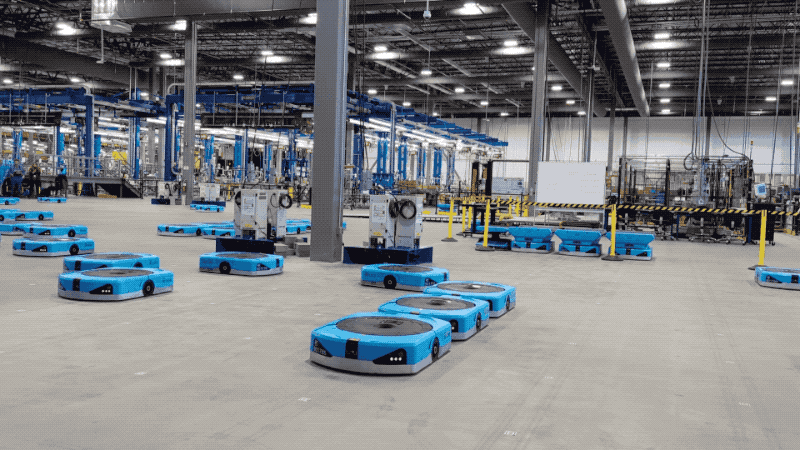
What strikes you as soon as you walk through the doors at BOS27 is how much the space resembles one of the company’s many fulfillment centers. It’s cavernous and buzzing with robots and their human counterparts. The space, which was built to accommodate a business that had grown too large for just the North Reading location, is where the company develops, tests and builds its robotic systems. (Another space has recently opened in Belgium, as well, courtesy of Amazon’s September acquisition of Cloostermans.)
This week, the company opened its doors to a handful of press members, including TechCrunch. The “Delivering the Future” event was, by any measure, a PR push. It was an opportunity to show off the company’s shiny new production facility and a chance to present a kind of unified front for Amazon Robotics, a category that now encapsulates every element of the Amazon retail experience from the moment a consumer hits “buy now.”
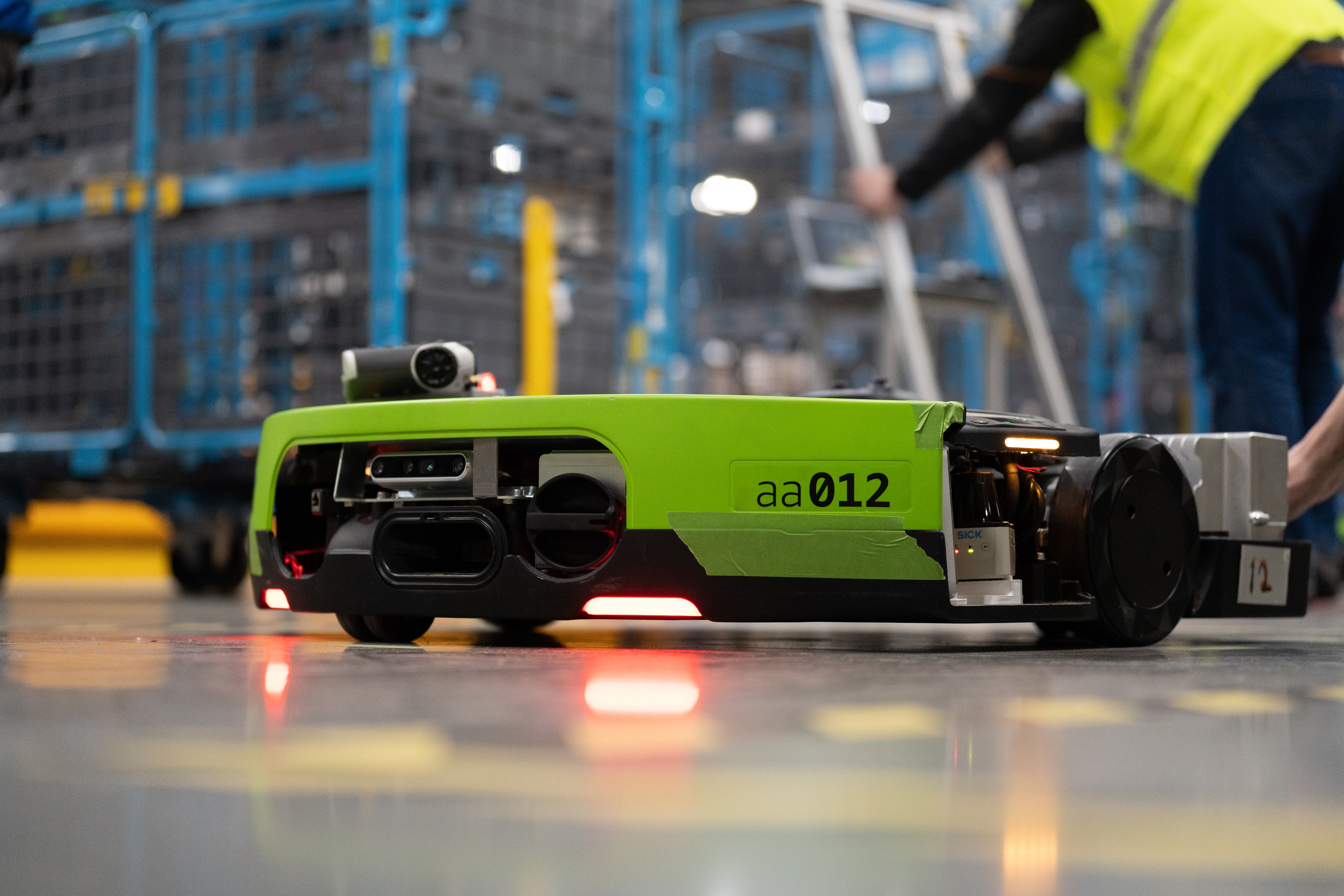
A couple of guided tours around the floor showcased the company’s growing army of wheeled robots built atop the Kiva platform, including the ubiquitous blue Hercules (the fourth-gen version of the product), and the mini conveyor belt sporting Pegasus and Xanthus, which is, for most intents and purposes, a lightweight version of the latter. Newer on the scene is Proteus, which arrives in a nearly neon green (“Seahawks green” as one executive joked today), with a small LED face and full autonomy — meaning it can safely operate outside the structured confines developed for the older models.
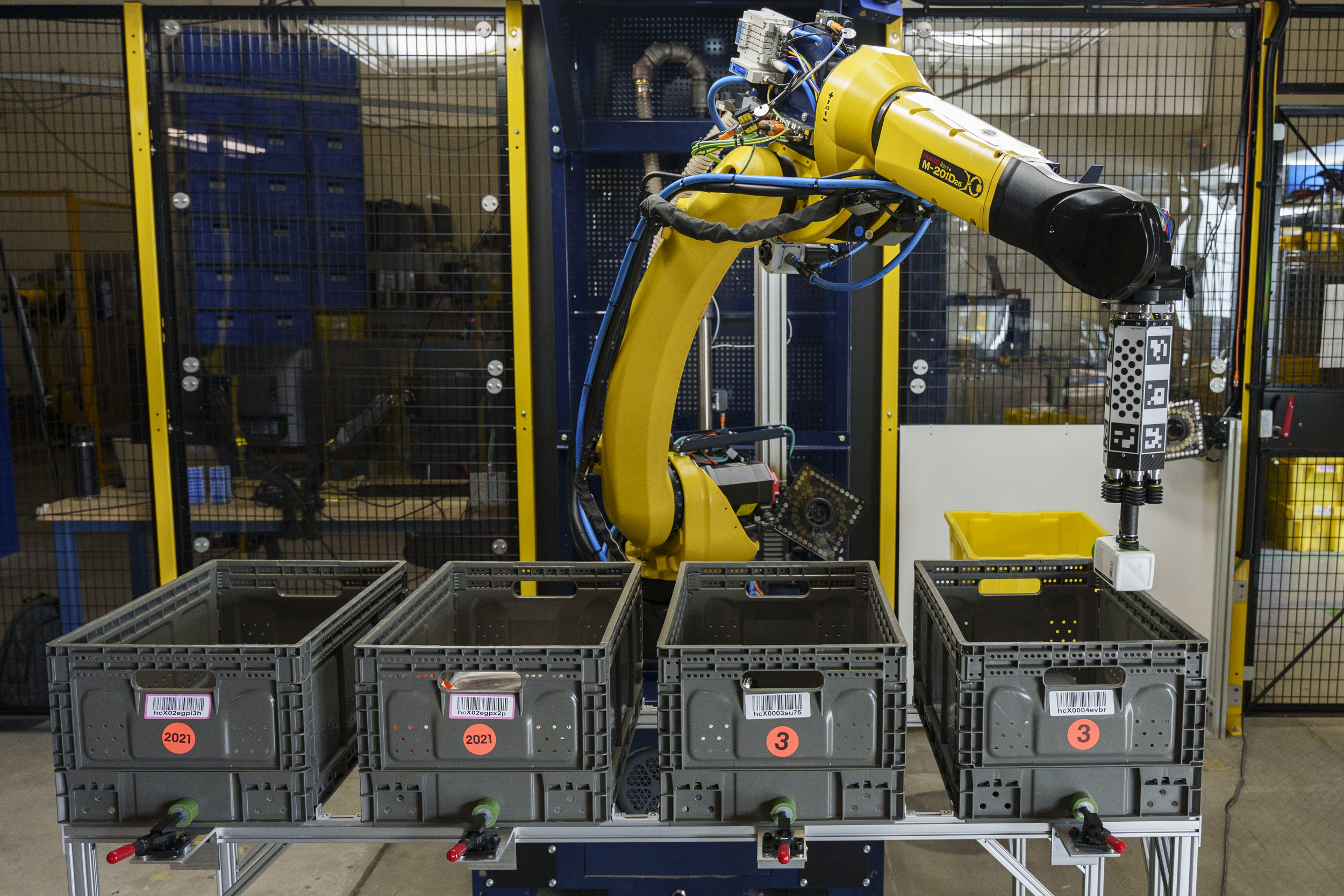
Amazon also showed off a trio of robotic arms, which follow a similar evolutionary trajectory as their wheeled counterparts. There’s Robin, which debuted around 18 months ago and is now installed in 1,000 warehouses across the world. Its successor Cardinal adds a level of efficiency to the system, as it tightly packs boxes to send across the fulfillment center. A third, Sparrow, debuted at today’s event.
As with its predecessors, Sparrow is effectively a souped-up version of a Fanuc off-the-shelf industrial robotic arm. The system is still in very limited pilots, including a facility in Texas and behind a safety cage at BOS27. What sets it apart from standard Fanuc arm deployments, however, is two-fold. First is the suction cup gripper, which utilizes pneumatics to pick up a wide range of different objects.
The real secret sauce is the software of course. Amazon says the AI, coupled with a range of different hardware sensors, allows the system to identify around 65% of the inventory offered through the retailer. It’s a mindboggling figure. The system uses things like bar codes, size and shape to identify individual objects.
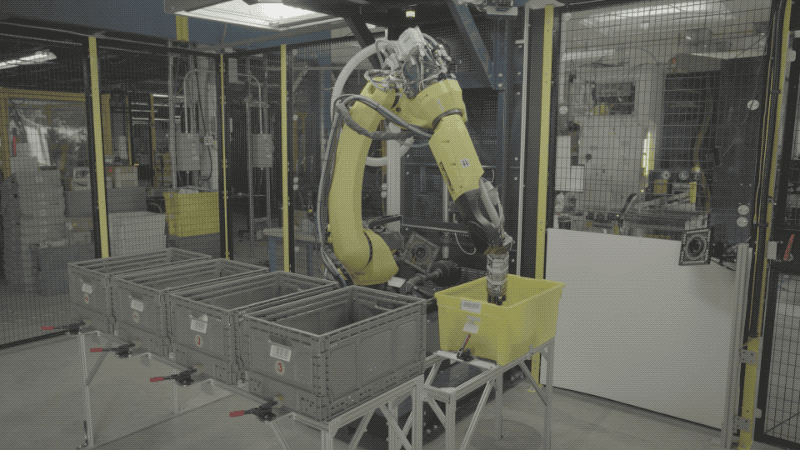
Robin and Cardinal deal exclusively in boxes — of which Amazon has around 15 basic models. Sparrow has the far more complex task of picking up the products themselves. Beyond identification, this introduces its own spate of different challenges. If you’ve ever purchased anything from the company, you know how wildly these things fluctuate in size, shape and material. Hypotheticallym the same arm is picking up a bowling bowl and a bag of cotton swabs. That’s where the suction cup system comes in, offering a far greater range of picks than a rigid robotic hand.
All told, the company has deployed more than 520,000 robotic drives since Amazon Robotics’ 2012 founding. It says that more than 75% of products ordered through its site come into contact with one of its robotic systems at some point in the process.
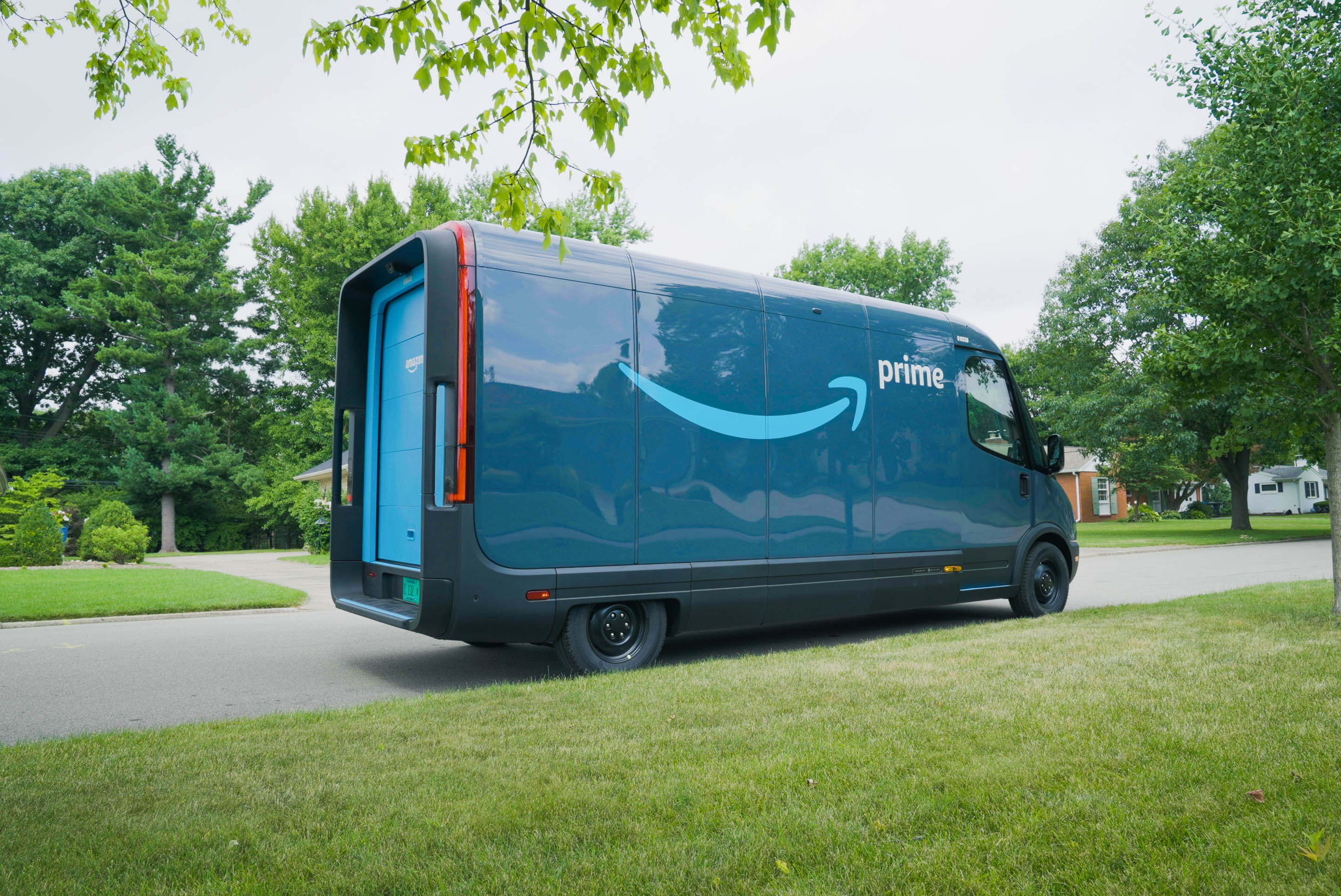
Last-mile was the other of focus of today’s event. That starts with the 1,000 Rivian EVs the company has begun deploying to meet holiday demand.
“Customers across the U.S. will begin to see custom electric delivery vehicles from Rivian delivering their Amazon packages, with the electric vehicles hitting the road in Baltimore, Chicago, Dallas, Kansas City, Nashville, Phoenix, San Diego, Seattle and St. Louis, among other cities,” the company noted in July. “This rollout is just the beginning of what is expected to be thousands of Amazon’s custom electric delivery vehicles in more than 100 cities by the end of this year — and 100,000 by 2030.”
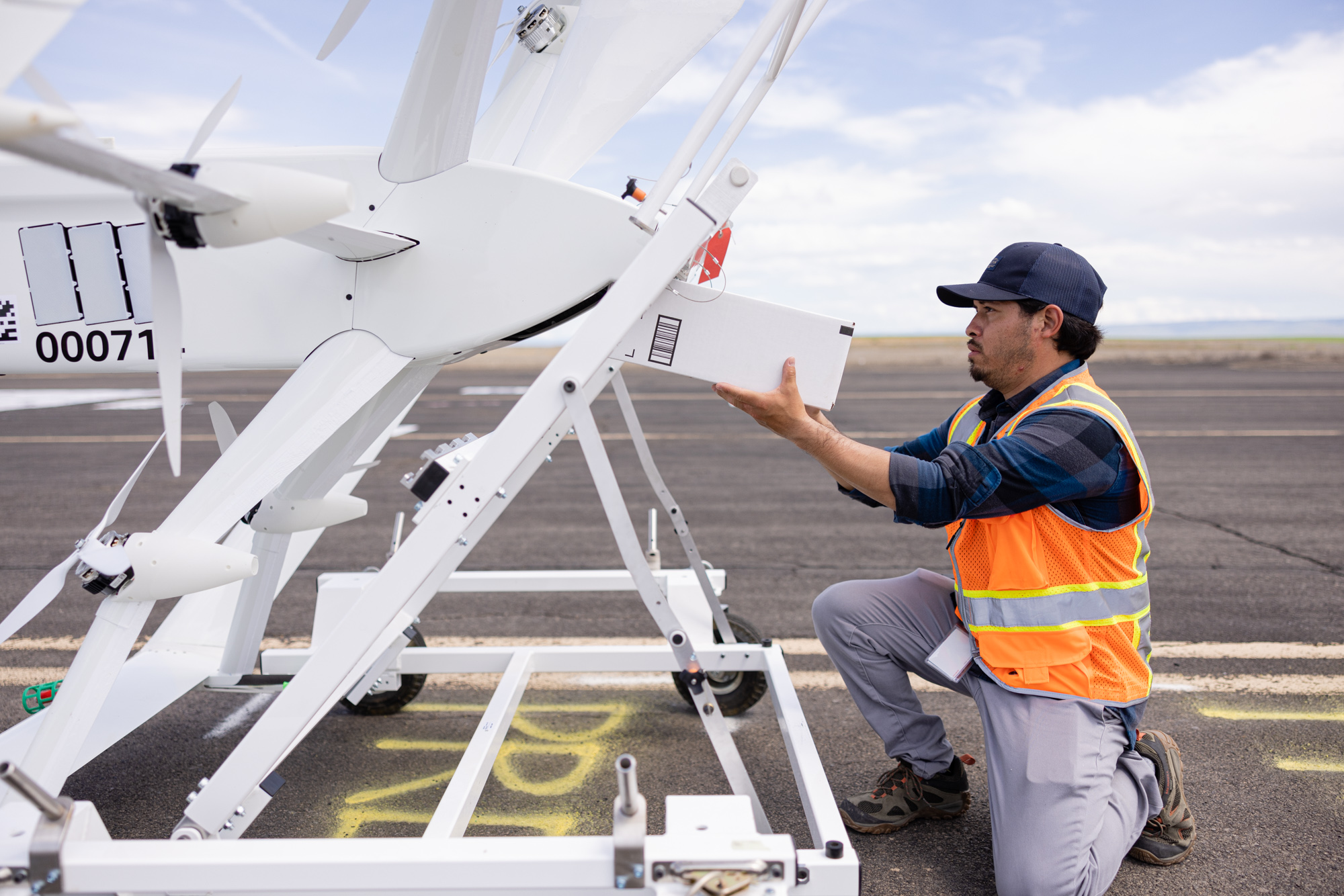
Somewhat surprisingly, Amazon is still very bullish on the future of drone deliveries. “A demonstrated, targeted level of safety that is validated by regulators and a magnitude safer than driving to the store,” Prime Air VP David Carbon said during a keynote. “Delivering 500 million packages by drone annually by the end of this decade. Servicing millions of customers, operating in highly populated, suburban areas such as Seattle, Boston and Atlanta. Flying in an uncontrolled space autonomously.”
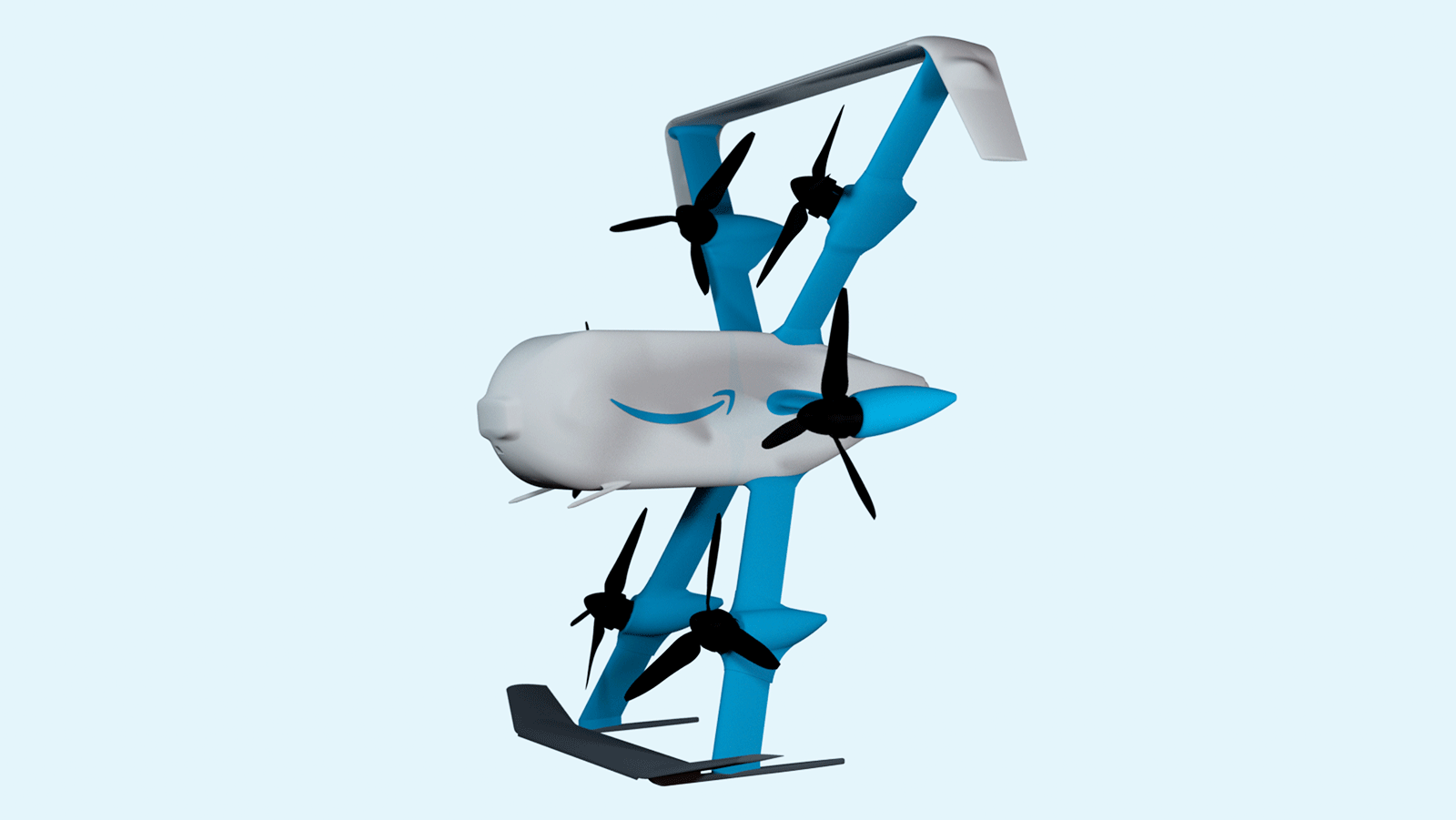
But while a rendering of its MK30 drone — set for a 2024 debut — did make an appearance onstage, one important robot was missing in all of this. Not a single word was uttered about Scout, the sidewalk delivery robot for which Amazon recently pumped the brakes in a major way.
“During our limited field test for Scout, we worked to create a unique delivery experience, but learned through feedback that there were aspects of the program that weren’t meeting customers’ needs,” an Amazon spokesperson told TechCrunch amid reports of widespread layoffs. “As a result, we are ending our field tests and reorienting the program. We are working with employees during this transition, matching them to open roles that best fit their experience and skills.”
Scout certainly isn’t alone. Broader economic headwinds have found CEO Andy Jassy taking evasive cost-cutting measures. Among them are the loss of several divisions deemed to be underperforming. It’s a tricky lens through which to view projects like Prime Air or Scout, which understandably require a long runway (as do robotics and automation projects generally). Suddenly even corporations as massive as Amazon are posing questions around sunk cost to determine whether some moonshots still have a reasonable chance of success.
The backdrop of these cuts loomed over the event. At the very least, they present a pragmatic lens through which to view these projects. It’s important to remember that even a massive multinational corporation with seemingly more money than god is still subject to macroeconomic factors. From the outside, at least, it’s hard to reconcile why a drone delivery program gets support and a last-mile delivery robot gets kicked to the curb, but this appears to be Amazon’s approach to the future of last mile, going forward.

I had a few moments to speak with Amazon Robotics head Tye Brady, and used the opportunity to discuss robotic innovation set against a backdrop of corporate belt tightening.
“We’re definitely aware of the macroecnomic conditions that are going on,” Brady told TechCrunch, before noting that the company had recently put a freeze on new hires through the end of the year. Amazon’s certainly not alone in that move — nor has it gutted its own headcount in the way corporations like Meta have in recent months.

“For Scout, we’ve always been — regardless of where we are with the economy — experimental,” Brady explained. “We’re ready and willing to experiment and try new things. Sometimes it works out and sometimes it doesn’t. But we always learn from that experience and roll that into our thinking in robotics.”
Asked whether Scout was a case of “things not working out,” Brady explained. “We did a couple of trials. How can we better the customer experience is the question we always ask in the end. The signals that we’re seeing are maybe not at this time. Not saying that’s forever the case, but not at this time.”
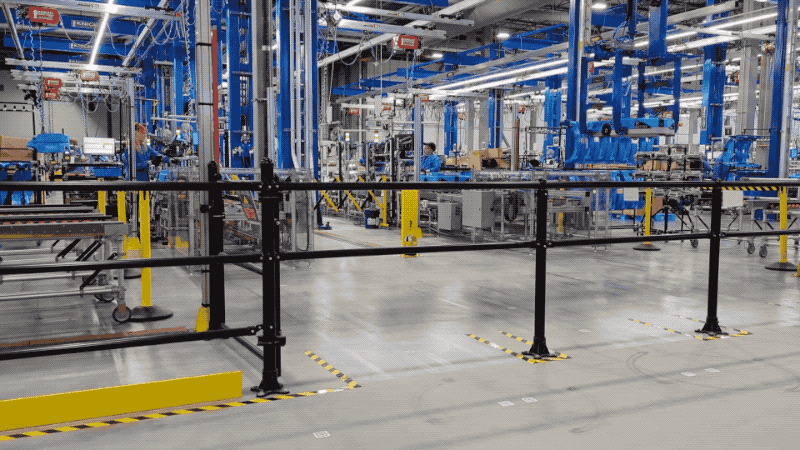
Even more deeply embedded in the Robotics team is Canvas. The startup, which Amazon acquired for more than $100 million in 2019, was reportedly among those impacted by these cost-cutting measures. The firm had built a truly impressive autonomous cart system. VP Joseph Quinlivan told me over the summer that the Proteus system was developed independently of the Canvas acquisition.
“That was internally developed by the Amazon Robotics team that came out of the Kiva acquisition,” he noted at the time. “A lot of times at Amazon, we have concurrent development efforts. We’re excited about what the Canvas team is going to deliver, and they’re going to focus on a different application we haven’t announced yet.”

For his part, Brady says the Canvas team was not an example of a project — like Scout — that simply wasn’t working out.
“We learned a lot from Canvas,” the executive told TechCrunch. “We talked to the team, saw the protoypes they wanted to do. We’d been working on prototypes a number of years, even prior to the Canvas acquisition. We got to share some of the technologies and real-world learnings from the team. […] These are experiences where we’re leaning, but now we have this Proteus vehicle out and we’re really excited about that.”
As the company continues to pull back on or cut other projects, Brady says that Amazon is “consolidating” its robotics projects under a single roof.
“Leadership, how we organize ourselves in how to deliver robotics products, which you’ve seen today and future products, which we’re hopefully announcing coming up. That doesn’t mean that we’re changing investment. There’s still a lot of need for investing in robotics. It has not changed our philosophy at all of people and machines working together and that we can give them a better toolset for them to do their jobs more safely, more simply and more efficiently.”
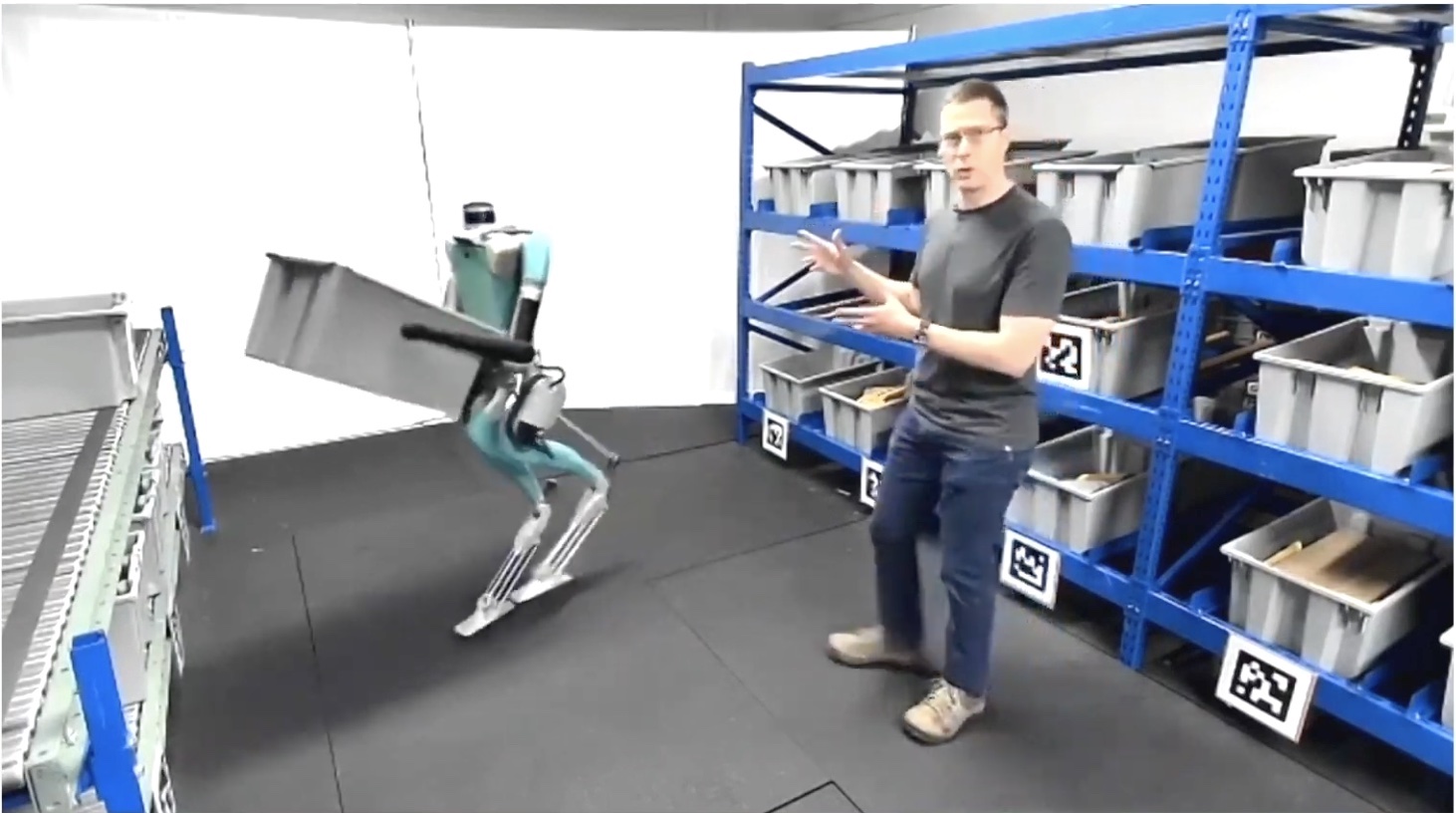
He adds that, in spite of cutbacks, acquisitions are “always on the table.” Amazon is also maintaining its $1 billion Industrial Innovation Fund in the face of broader cutbacks. The company has already invested in a slew of robotics firms, including Digit-maker Agility and BionicHIVE, an Israeli company that produces an impressive shelf-based robotic system.
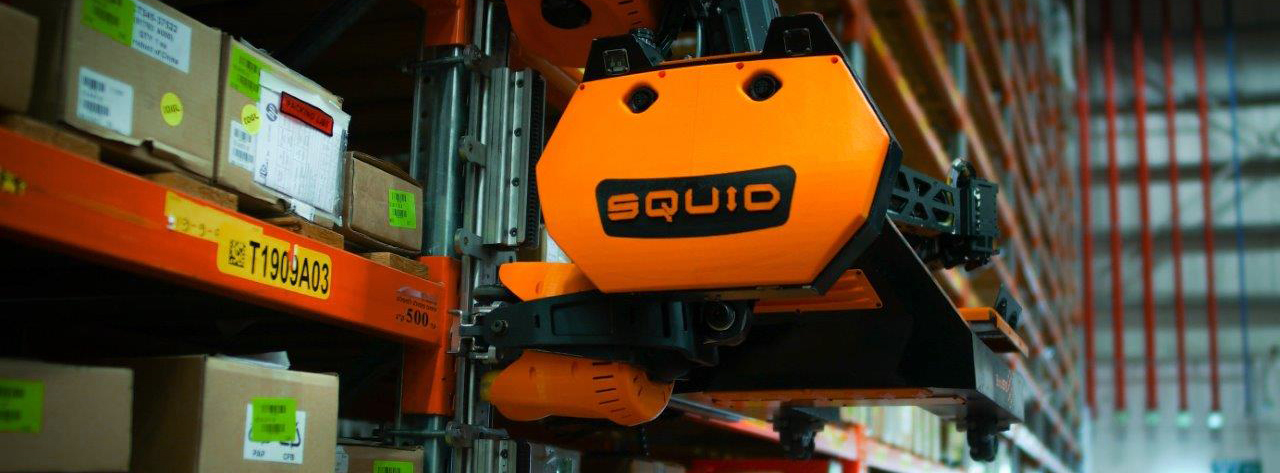
“We realize that not everything has to be invented inside the walls of Amazon,” said Brady. “If we can seed some of these companies and allow them to do technology with a real project context behind it, then we can ride along with them. As they’re successful, we can learn from them, and if it makes sense, we can then start to incorporate those products into our own processes. But really, the point of the fund is let’s learn and let’s see what’s going to happen in this amazing new golden era of robotics.”
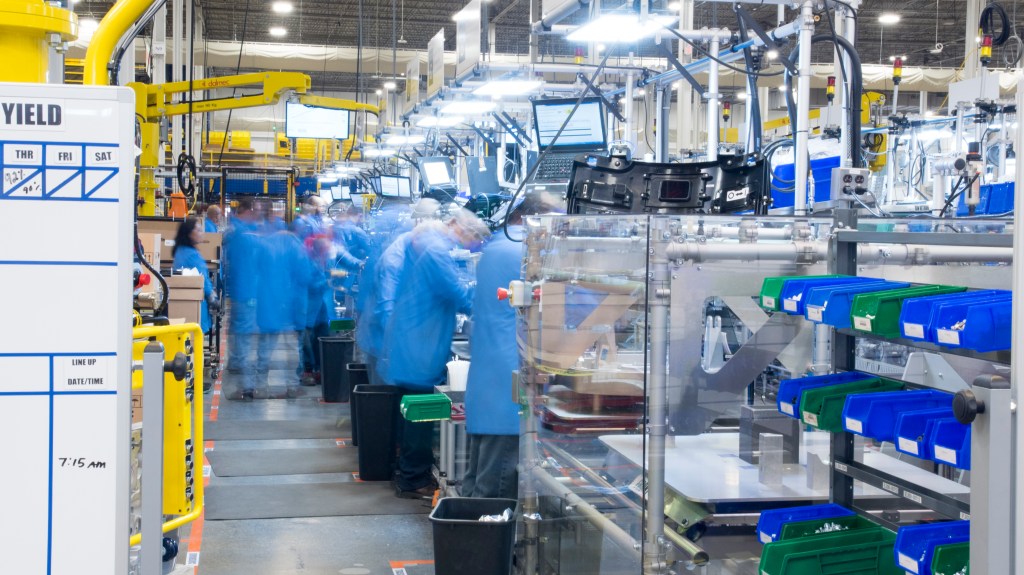






























Comment